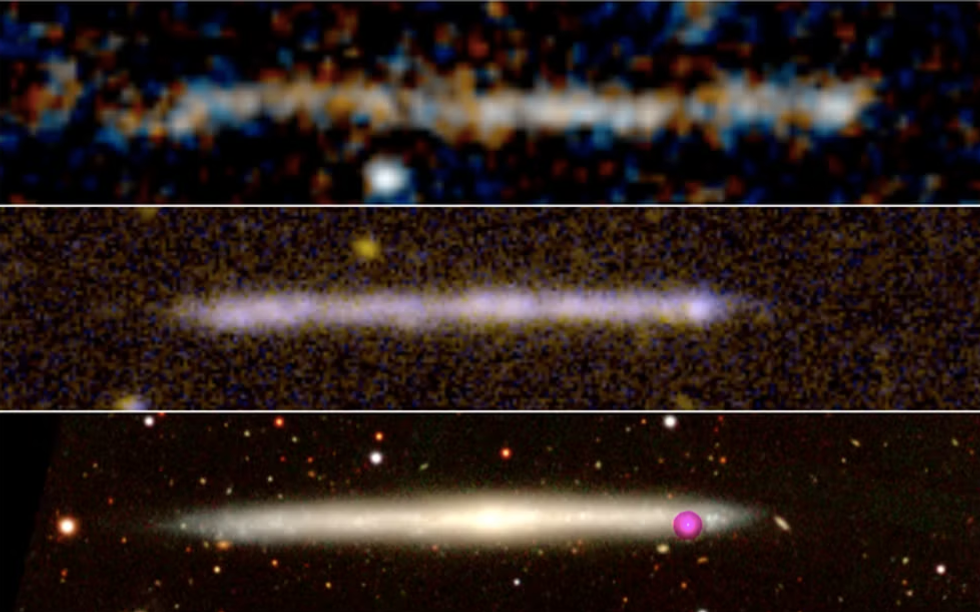Harry Fletcher
May 11, 2023
Supermassive Black Holes Could Be Killing Our Universe’s Earliest Galaxies
content.jwplatform.com
There’s a “runaway” black hole which has been speeding through the universe and mystifying the scientific community – or so we thought.
Now, a possible explanation has been found that could explain the unusual, long star structures which have been observed over recent weeks.
Last month, scientists thought they’d discovered something very unusual, with a trail of stars observed by the Hubble Space Telescope.
Some believed then that they were the result of a black hole creating eye-catching formations. Yale University researchers also posited the theory that the formation after two galaxies merged together millions of years ago.
Sign up to our new free Indy100 weekly newsletter
However, a new possible explanation from scientists at the Instituto de Astrofísica de Canarias (IAC) suggests that it is in fact just a flat or thin galaxy.

“The motions, the size, and the quantity of stars fits what has been seen in galaxies within the local universe,” said Jorge Sanchez Almeida, an IAC researcher who is the first author of the article, in a statement.
“It’s a relief to have found the solution to this mystery, the new proposed scenario is much simpler. In one sense it is also a pity, because the existence of fleeing black holes is expected, and this could have been the first one to be observed.”
The team published its findings in the journal Astronomy and Astrophysics under the title “Supermassive black hole wake or bulgeless edge-on galaxy?”.
They compared the unusual feature to a galaxy IC5249 and found it to be similar.
They found that it was surprisingly similar. The stars were moving in similar ways to those found in closer, comparative galaxies, researchers said.
“We also looked at the relation between the mass of the assumed galaxy and its maximum velocity of rotation, and discovered that indeed it is a galaxy which behaves like a galaxy,” said Ignacio Trujillo, an IAC researcher who worked on the study. “It is an interesting object, because it is quite a large galaxy at a very large distance from Earth, where the majority of the galaxies are smaller.”
Have your say in our news democracy. Click the upvote icon at the top of the page to help raise this article through the indy100 rankings.
Top 100
The Conversation (0)














